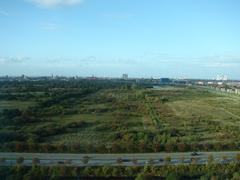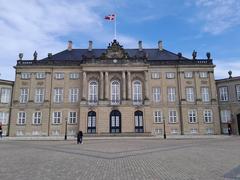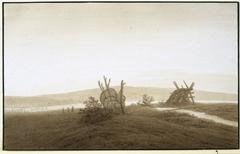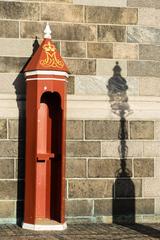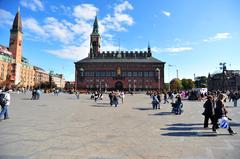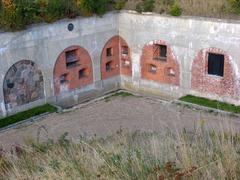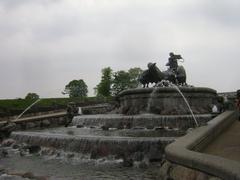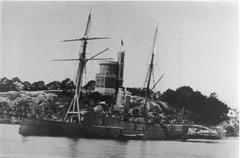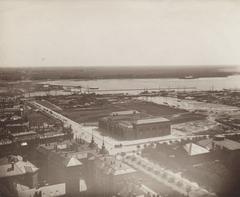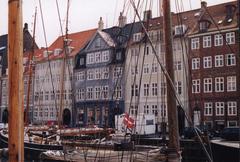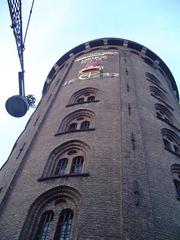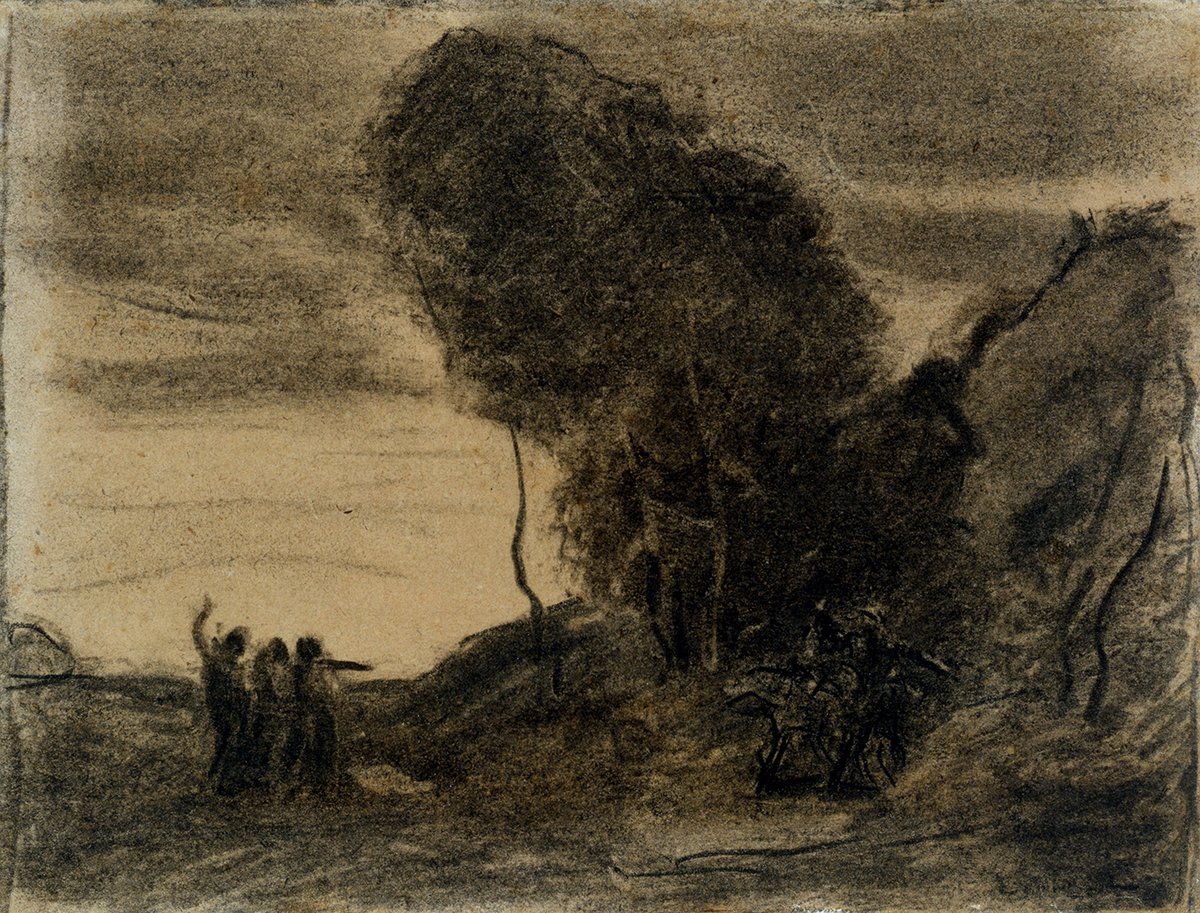
Comprehensive Guide to Visiting Ordrupgaard, Frederiksberg, Denmark
Date: 24/07/2024
Introduction
Ordrupgaard Museum, located in Charlottenlund near Copenhagen, Denmark, stands as a testament to the rich cultural and artistic heritage of the region. Established in 1918 by Wilhelm Hansen and his wife Henny, the museum originally aimed to introduce French 19th-century art to Denmark. Today, Ordrupgaard’s collection has expanded to include significant works from various art movements, including French Impressionism and Danish Golden Age art, making it a must-visit destination for art enthusiasts (Denmark.net, The European Spectator).
The museum’s architectural evolution, featuring a modern extension by renowned architect Zaha Hadid, and the inclusion of Finn Juhl’s house, further enhance its appeal. Visitors can explore beautifully landscaped gardens, site-specific installations by contemporary artists, and an array of masterpieces by artists such as Claude Monet, Auguste Renoir, and Vilhelm Hammershøi (Wikipedia, Lonely Planet).
Whether you’re interested in the museum’s historical context, its impressive art collections, or its architectural innovations, this comprehensive guide will provide you with all the information you need to plan a memorable visit to Ordrupgaard.
Table of Contents
- Introduction
- History and Significance of Ordrupgaard
- Architectural Evolution
- The Finn Juhl House
- Cultural Significance
- Visitor Experience
- Accessibility and Practical Information
- FAQ
- Conclusion
History and Significance of Ordrupgaard
Founding and Early Years
Ordrupgaard Museum was founded by Wilhelm Hansen and his wife Henny in their stately country home, completed in 1918. Wilhelm, an insurance representative with a passion for art, aimed to bring French 19th-century art to Denmark. His initial acquisitions included works by prominent French Impressionists such as Claude Monet, Auguste Renoir, and Camille Pissarro (The European Spectator).
Expansion and State Acquisition
The collection initially focused on French Impressionism but soon encompassed other significant art movements. Pieces from Delacroix’s Romanticism, Rousseau’s Barbizon School, Courbet’s Realism, Manet’s Modernism, and Gauguin’s Symbolism were included. The collection also featured Danish Golden Age artists like Christen Købke, Wilhelm Marstrand, and Johan Thomas Lundbye (Denmark.net).
In 1953, the Danish state acquired the property and opened the collection to the public, marking a new era of expansion and diversification. Works by other renowned French artists such as Eugène Delacroix, Paul Gauguin, and Édouard Manet were added (Denmark.net).
Architectural Evolution
The architectural evolution of Ordrupgaard reflects its dynamic history. The original neo-classical manor house was expanded in 2005 with a significant extension designed by world-famous architect Zaha Hadid. This modern, snail-shaped structure made of glass and black lava seamlessly blends with the classical architecture, creating a harmonious fusion of old and new (Denmark.net).
The Finn Juhl House
An important addition to the Ordrupgaard landscape is the residence of pioneering 20th-century Danish designer Finn Juhl. Known for his innovative interior designs, Juhl’s home has been incorporated into the museum complex. It is open to visitors on weekends from September to June, offering a unique glimpse into the life and work of one of Denmark’s most influential designers (Lonely Planet).
Cultural Significance
Ordrupgaard holds a significant place in Denmark’s cultural landscape. The museum’s extensive collection of 19th and 20th-century Danish and French art provides valuable insights into the artistic movements of these periods. The inclusion of works by Danish Golden Age artists alongside French Impressionists highlights the cross-cultural influences that have shaped European art.
The museum’s commitment to preserving and showcasing these works has made it a vital cultural institution. By offering a comprehensive view of both Danish and French art, Ordrupgaard serves as a bridge between these two artistic traditions, fostering a deeper understanding and appreciation of their respective contributions to the art world (Denmark.net).
Visitor Experience
Visitors to Ordrupgaard can expect a rich and immersive experience. The museum’s two permanent collections—the French Fine Arts Collection and the Danish Fine Arts Collection—offer a diverse array of artworks. The French collection, born out of Wilhelm Hansen’s vision, includes masterpieces by Monet, Renoir, and other prominent artists. The Danish collection features works by Købke, Marstrand, Lundbye, and contemporary artists like L.A. Ring and Theodor Philipsen (Denmark.net).
In addition to the art collections, visitors can explore the beautifully landscaped gardens and the Finn Juhl house. The museum also features a smart café, providing a perfect spot to relax and reflect on the art and architecture. The museum’s art park, which remains open even during periods of renovation, showcases site-specific installations by renowned contemporary artists, adding another layer of artistic engagement for visitors (Lonely Planet).
Accessibility and Practical Information
Ordrupgaard is easily accessible from Copenhagen, making it a convenient destination for both locals and tourists. The museum is located at Vilvordevej 110, 2920 Charlottenlund, and can be reached by public transport. Visitors can take bus numbers 169 or 179 to Femvejen, followed by a 20-minute walk to the museum (Denmark.net).
The museum’s opening hours vary, with the premises open from 11 am to 5 pm on weekends and from 1 pm to 5 pm during the week. It is important to note that the museum is closed on Mondays. Admission fees are reasonable, with free entry for visitors under 18 and reduced rates for students and those under 26. Adult tickets are priced at 120 DKK, and tickets can be booked online in advance (Denmark.net).
FAQ
What are the opening hours of Ordrupgaard Museum?
- The museum is open from 11 am to 5 pm on weekends and from 1 pm to 5 pm during the week. It is closed on Mondays.
How much are tickets to Ordrupgaard Museum?
- Adult tickets are priced at 120 DKK. There is free entry for visitors under 18 and reduced rates for students and those under 26.
How can I reach Ordrupgaard Museum?
- The museum is located at Vilvordevej 110, 2920 Charlottenlund. It is accessible by public transport; take bus numbers 169 or 179 to Femvejen, followed by a 20-minute walk.
What can I see at Ordrupgaard Museum?
- Visitors can explore the French and Danish Fine Arts Collections, the beautifully landscaped gardens, the Finn Juhl house, and site-specific installations in the art park.
Conclusion
Ordrupgaard Museum stands as a beacon of cultural and artistic heritage in Denmark. Its rich history, diverse collections, and architectural significance make it a must-visit destination for art enthusiasts and cultural explorers. By preserving and showcasing the works of both Danish and French artists, Ordrupgaard continues to fulfill Wilhelm Hansen’s vision of bringing the beauty and significance of 19th and 20th-century art to the Danish public.
Call to Action
For more information or to book tickets, visit the official Ordrupgaard Museum website. Stay updated on upcoming events and exhibitions by following Ordrupgaard on social media.


